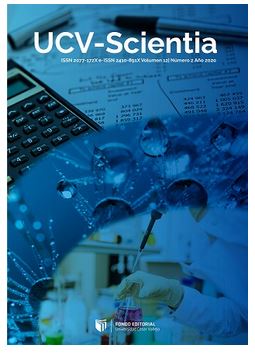In vitro antimicrobial effect of Allium sativum and Zingiber officinale extracts against Staphylococcus aureus
DOI:
https://doi.org/10.18050/RevUcv-Scientia.v10n2a4Keywords:
Staphylococcus aureus, Allium sativum, Zingiber officinale, Antimicrobial sensitivityAbstract
The study determined the antimicrobial effect in vitro of Allium sativum "garlic" and Zingiber officinale "ginger" extracts at concentrations of 25%, 50% and 100% on Staphylococcus aureus. The research design was experimental. The antibiotic oxacillin was used as positive control and the physiological saline solution as negative control. The vegetable extract of Allium sativum was obtained by crushing at room temperature. The extract of Zingiber officinale was obtained by steam distillation and it was standardized with Tween-80. Staphylococcus aureus was obtained from isolated colonies of an 18-hour young culture. Then it was inoculated into the plates with Agar Mueller Hinton culture medium. Antimicrobial activity was determined by the Kirby-Bauer Disk Diffusion method, which contained the different dilutions of the vegetable extracts. The diameters of the halos of the inhibition zones were determined with the Vernier using the criteria of the National Committee for Clinical Laboratory Standards (NCCLS): sensitive, intermediate and resistant. The data were statistically tested by Anova and Tukey. It was found that the largest average diameters of the inhibition halo induced by Allium sativum and Zingiber officinale were 12.7 mm (p<0.05) and 6.7 mm (p<0.05), at concentrations of 100% respectively. Therefore, the Allium sativum extract presents greater antimicrobial effect, in vitro, than the Zingiber officinale extract against Staphylococcus aureus.
Downloads
Published
How to Cite
Issue
Section
License

This work is licensed under a Creative Commons Attribution-NonCommercial 4.0 International License.
- Share — copy and redistribute the material in any medium or format
- Adapt — remix, transform, and build upon the material.
- The licensor cannot revoke these freedoms as long as you follow the license terms.
Under the following terms:
-
Attribution — You must give appropriate credit, provide a link to the license, and indicate if changes were made. You may do so in any reasonable manner, but not in any way that suggests the licensor endorses you or your use.
- No additional restrictions — You may not apply legal terms or technological measures that legally restrict others from doing anything the license permits.













